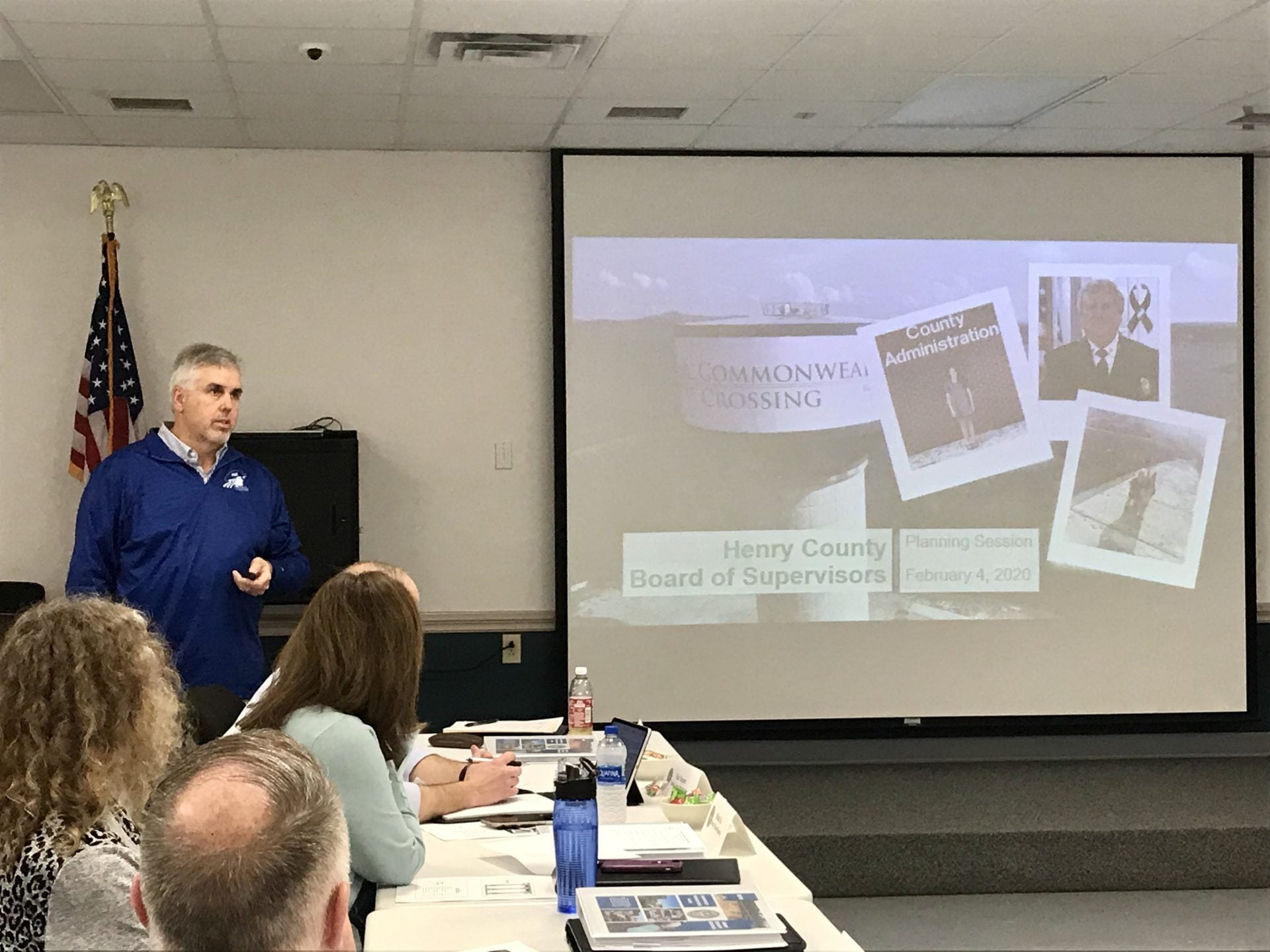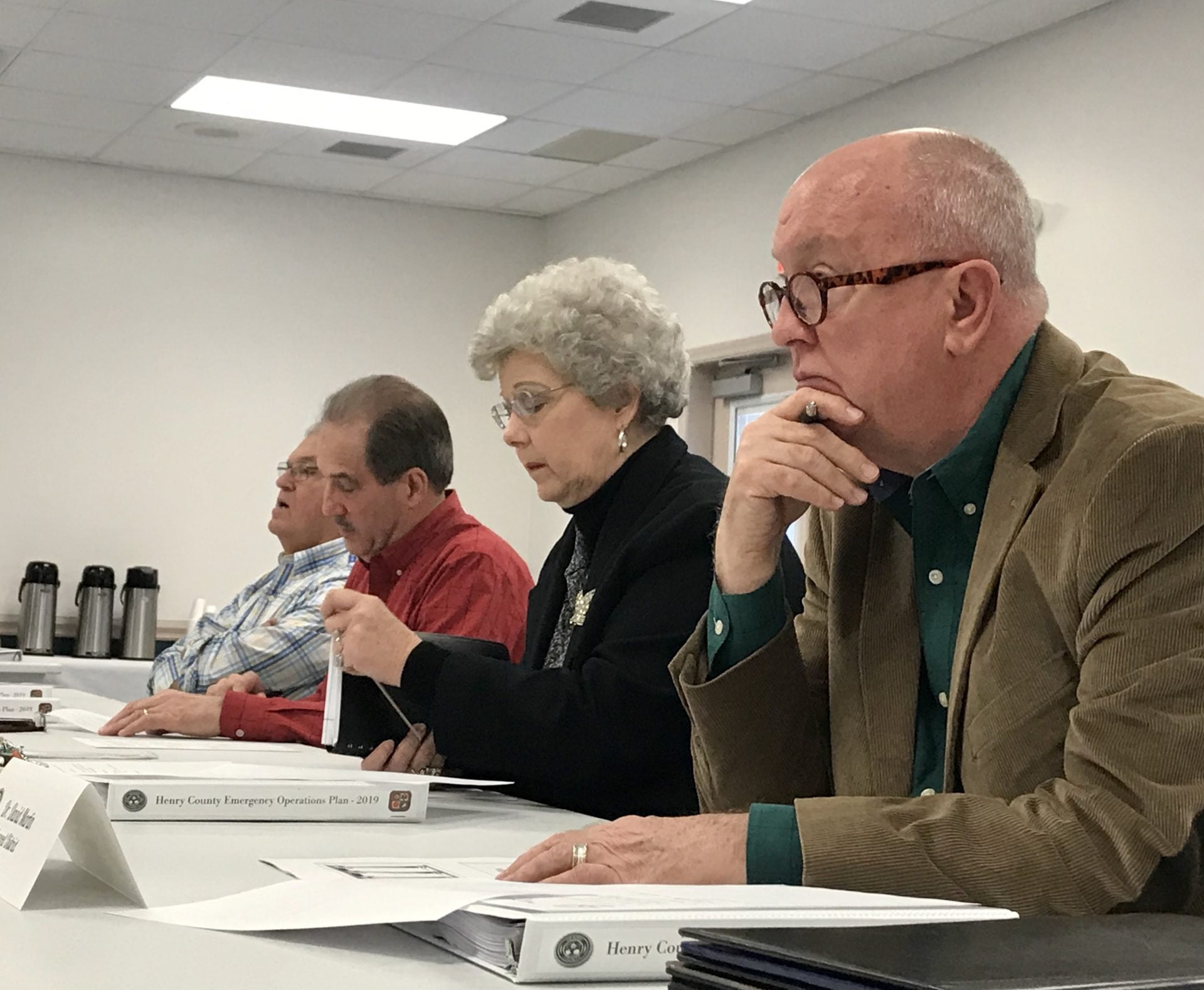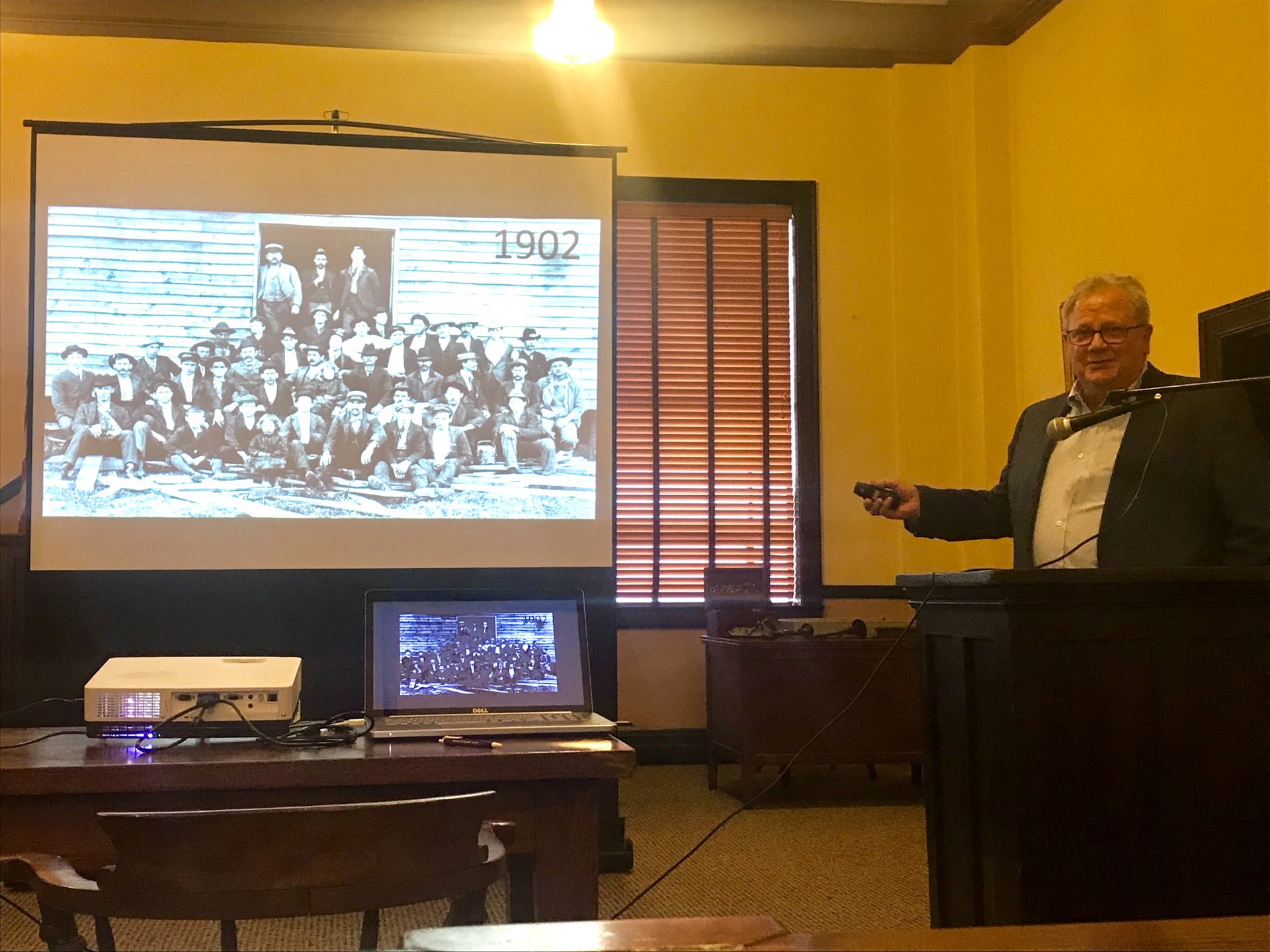
By Brandon Martin
Addressing workforce gaps, employee compensation and the increased load of fire and emergency phone calls highlighted discussion during the Henry County Board of Supervisors annual planning session.
In anticipation of completing the Henry County Adult Detention Center in January 2022, County Administrator Tim Hall said jail new employees will be hired in the coming year.
“There is a significant lead time on hiring and training new employees,” he said, adding that the county would need to account for the additional costs of personnel in the budget.
Hall said there were various reasons to build the new facility, mainly “the growing number of inmates. It really wasn’t conducive to safe working condition for our folks who work in there.”
The new detention center will have facilities for mental health and job outsourcing placement opportunities.
“I think it is incumbent on us not only to incarcerate folks but try to do the best we can do so that we don’t have to re-incarcerate them. If we can do something from a mental health standpoint or a job skills standpoint then I think that is one of our roles,” Hall said.
The construction has already benefited the community in some ways, according to Deputy County Administrator Dale Wagoner. He said many of the supplies for construction are being sourced locally. Boxley Materials Company is providing concrete, the block is coming from Martinsville Concrete and labor is coming from all over the Southwest Virginia region. In addition, the county has also found ways to build in a cost-effective manner.
“In Virginia, if a contractor buys materials, they have to pay sales tax on it,” Wagoner said. “If they bought it, they would have to add 5.3 percent to cover the Virginia sales tax. By us (local government) purchasing it, we don’t have to pay that 5.3 percent tax, so we save that on the purchase costs.”
Existing contracts by the county, such as heating and cooling, also allowed the county to save money on the project.
Continuing on the theme of law enforcement and public safety, Hall said that “the demand for fire and EMS (emergency medical services) continues to increase.” He added that the Director of Public Safety Matt Tatum and his staff have done an excellent job but “sometimes it’s hard to get your arms around the escalating number of calls and demands. We are asking a lot of the folks that work for Matt. We are asking a lot of our volunteers,” Hall said.
There has been an approximate two percent increase in the number of calls for fire and EMS services, with a ten percent increase in responses by county staff. The county staff is handling about 82 percent of all calls, pointing to a shortfall in the number of volunteers according to Hall.
“Something, somewhere is going to have to change,” said Joe Bryant, of the Collinsville District. Bryant also serves as a member of the Board of Directors at the Fieldale-Collinsville Rescue Squad. “We have a problem in our EMS system as far as volunteers go. We just aren’t getting any new recruits hardly.”
Tatum said that the problem of volunteerism has decreased overall for the county.
“Volunteers are hard to come by and when you add to it the demands of fire and EMS, with the training requirements and education, we have less and less people pursuing that,” he said.
Another area that needs attention is employee retention. Based on data presented at the session, 20 employees left the county in the past year, including nine retiring and leaving with 206 years of combined experience.
Within the next five years, 31 employees will be eligible to retire. The county employees 171 people making those 31 workers an 18 percent chunk of the staff.
The issue of employee pay was listed a related area of concern, according to Hall. “Compensation across the board is still low.”
Of the 20 employees that left in the last year, some left with an average of five years of experience which Hall said “quite frankly they are leaving for more money. It’s a significant barrier that they are choosing to leave and go somewhere else. We have to have a plan to address that whether through increased compensation or other things that we can bring to the table. That will hopefully help fill that void or keep some at the table that can retire but choose not to,” he added.
Other issues facing the county are legislative changes from Richmond, potentially in the form of increases to the minimum wage or changing Virginia’s “right-to-work” status. The county may also receive some help from the state if the county is granted equal taxing authority. This along with tobacco, meal, lodging and sales tax changes could provide additional sources of revenue for the county.
Since Martinsville filed to begin the process of reversion in December, Hall said the county has also began their process as well. They have attorneys and a forensic accountant reviewing city documents, and the county plans on having a public presentation in the “near future” to present those findings.
Until then, “there’s really nothing else we can do. This is a city-driven agenda. All we can do is react,” Hall said.
The county administrator also voiced concerns about the merging of the school systems in the process of reversion.

“If this proceeds down the reversion track, this will not be a merging of the school systems. This will be the city giving up its responsibility to educate kids and we take that responsibility. This is an absorption of students, and we don’t make decisions for the school board. It would be their decision to decide who works where, but the way I look at it, we have a great school system. If we need extra people for the extra students that are coming in, then we will look at hiring extra people,” Hall said.
Following his presentation, Hall tasked the supervisors and other county officials to form groups and list concerns in the areas of economic development, education, law enforcement and public safety. Employee compensation and retention made the list of priorities in each of the three areas.
Under economic development, issues such as diversification of industry types, providing suitable workforce housing, daycare, transportation, and increased marketing made the list.
Some areas of action under education were the expansion of career technical education in high school, capital improvements potentially tied to reversion, developing current employees for leadership roles and continuing to enhance school safety.
Responses to improvements in law enforcement and public safety ranged from gradually advancing technology, adding job shadowing programs, and centralizing all public safety aspects to one location.




